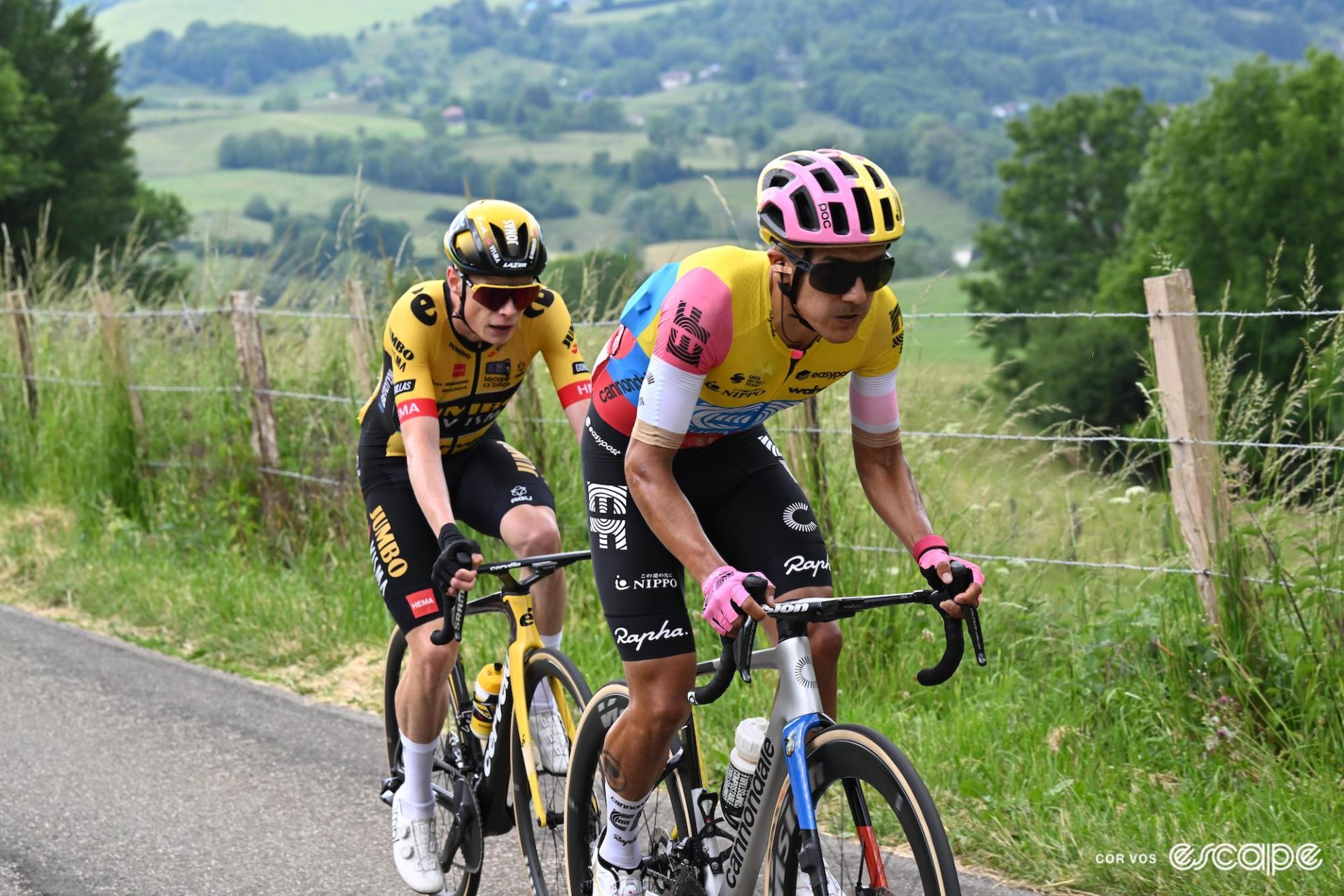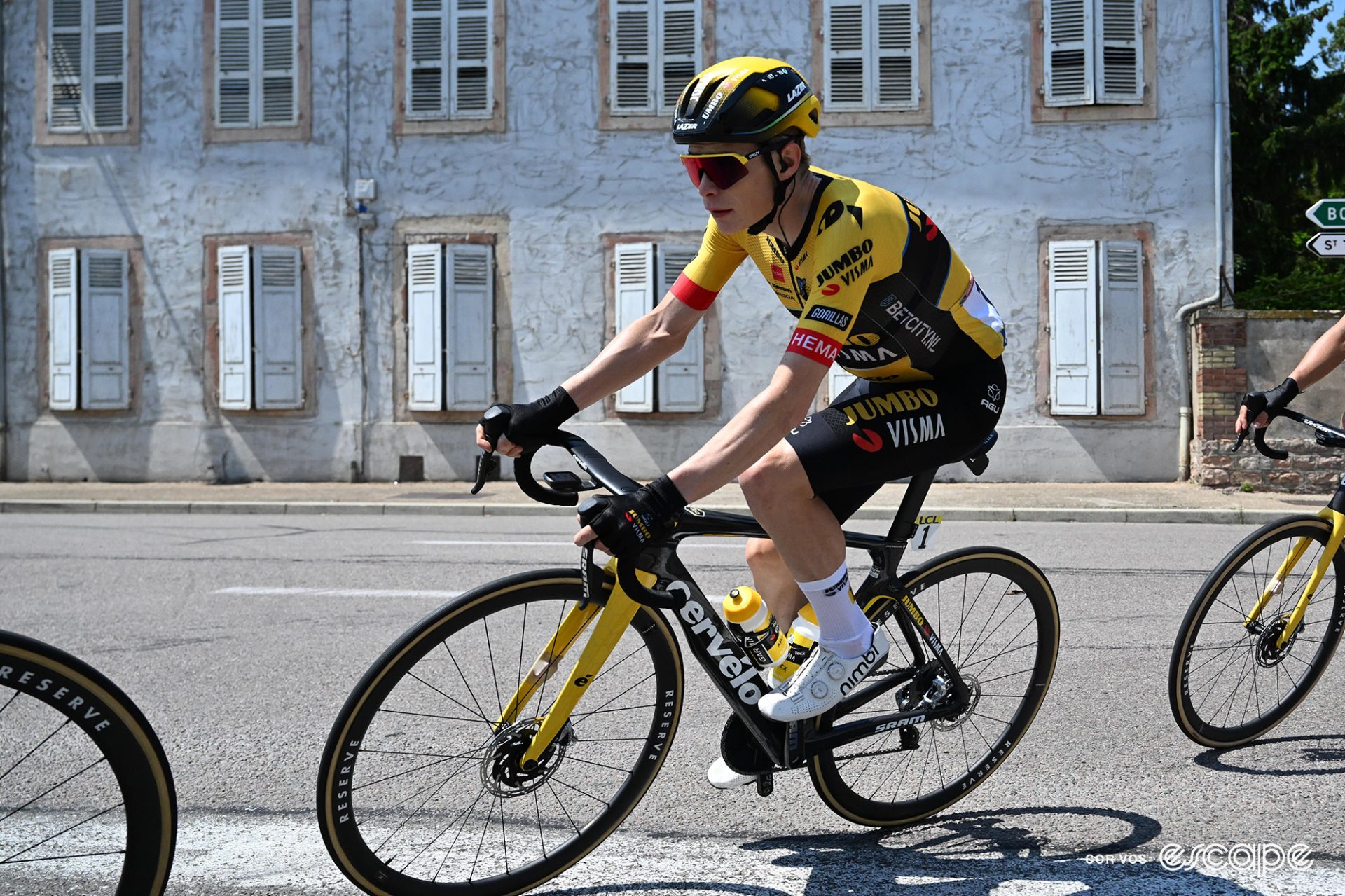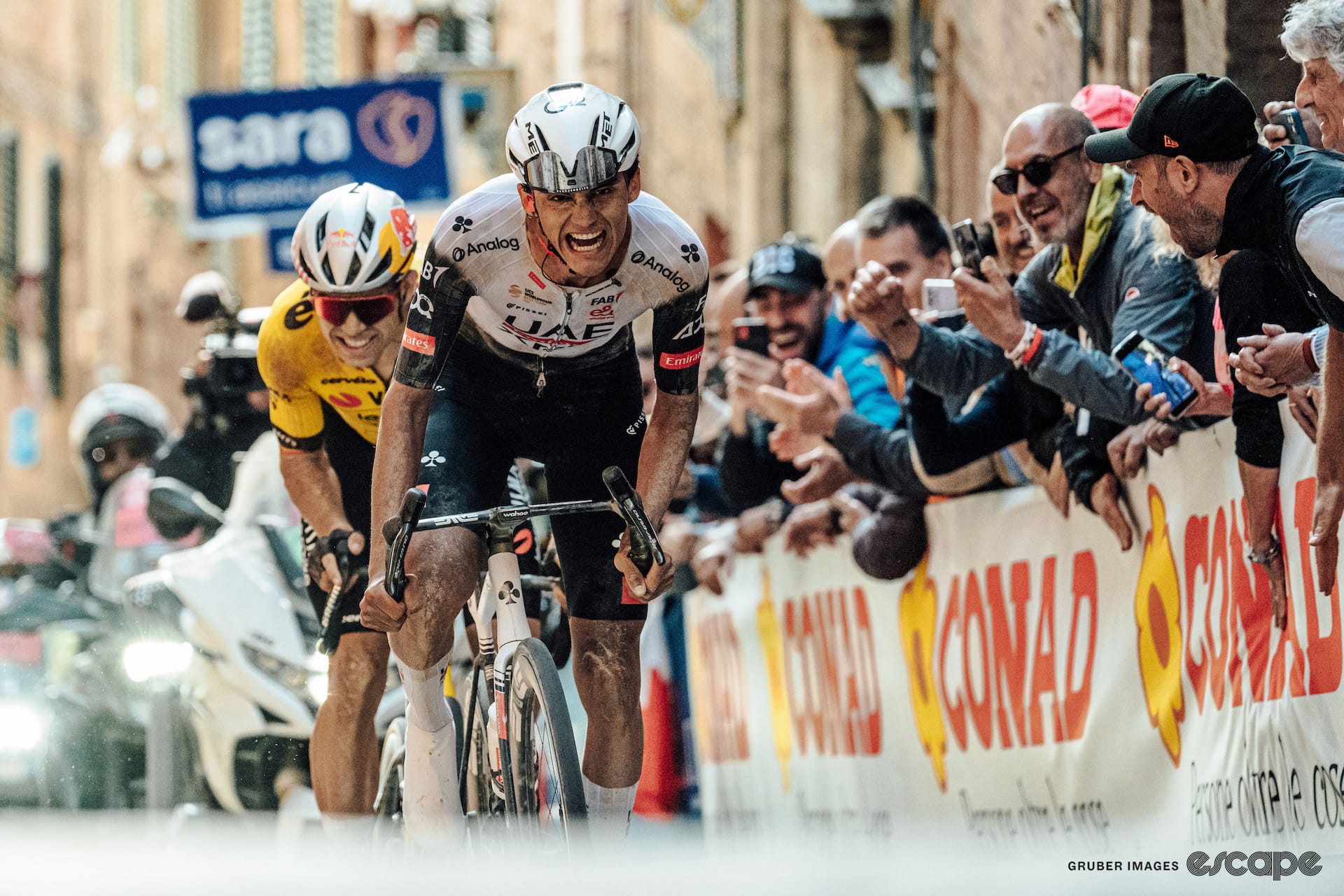Jonas Vingegaard took a dominant win in stage 5 of the Critérium du Dauphiné today, taking the race lead in the process. Perhaps more interestingly, the defending Tour de France champion won the stage with a 1x (single chainring) drivetrain.
Admittedly, "rider X (insert SRAM-sponsored pro name) races on 1x" is hardly headline news these days. But the reigning Tour de France champion, winning a hilly road stage with 2,000 meters of elevation gain, in his only build-up race ahead of defending that Tour title in July, does feel like breaking a 1x glass ceiling. More intriguingly, the 1x win comes after Vingegaard rode stage 1 at the Dauphiné with a 2x setup.
Vingegaard's equipment choices at the Dauphiné are a sign of things to come. Despite a heart-in-mouth chain drop moment, Primož Roglič won the final time trial and the pink jersey at the Giro d'Italia on a 1x drivetrain. That almost-disastrous mechanical clearly has not dented Jumbo-Visma's riders, mechanics, or manager's faith in the 1x solution. We may see the setup at this year's Tour, perhaps on the punchy stages around the Grand Depart in Bilbao.
The setup optimisation that SRAM's equipment could offer was singled out when the team and groupset manufacturer announced their new partnership towards the end of 2022. With Wout Van Aert running 1x at Milan-San Remo, Roglič opting for a gravel XPLR setup in the Giro, and now Vingegaard not only winning, but swapping between 1x and 2x on various stages at the Dauphiné, the team clearly has a willingness to optimise setups on a rider-by-rider and stage-by-stage basis.
Why 1x is potentially an advantage
We've heard it all before: 1x drivetrains are lighter and more aero than their 2x siblings. Vingegaard was racing on the Cervelo S5 today, widely considered one of the fastest bikes in the pro peloton but also far from the lightest. Choosing a 1x and opting for Reserve's 40|44 wheelset helped bring Vingegaard's S5 a little closer to the UCI weight limit. Perhaps running the aero bike option while mitigating the weight penalty was Vingegaard's 1x motivation.
Speaking of aero, going 1x will bring some aero savings also, especially at pro speeds and given the size of SRAM (and Campagnolo's new Super Record Wireless) front derailleurs.
1x advocates also argue a single ring offers some drivetrain efficiency savings courtesy of the straighter chainline a larger chainring effectively creates by allowing the rider to ride in the middle of the cassette more often. There are also some minor gains courtesy of the reduced chain articulation thanks to the larger sprockets and chainring combination.
While these claims are typically true for time trial setups, 1x critics argue the opposite is true for all but flatter road races. They point out that a 1x arrangement actually makes for more cross-chaining and additional drivetrain losses, given the rider will inevitably have to cross-chain more often. Furthermore, given Vingegaard was racing with a 50-tooth 1x chainring, the efficiency gain of a larger chainring/sprocket combo is a non-runner.
There is also an argument for the improved chain retention, despite Roglič's dropped chain from a 1x setup in the recent Giro-deciding final time trial. Dropped chains are almost a regular occurrence in the pro peloton these days, and the increased chain retention of a 1x chainring's narrow-wide tooth profile can help prevent such issues.

There is one additional SRAM-specific reason for running 1x. SRAM's shifter design is easily the most intuitive and arguably the best electronic shifter design available, where the one-button-per-shifter setup means the right shifts harder at the rear, left is easier, both for front derailleur shifting.
The one criticism of this design is the slight delay in rear-derailleur shifting as the system waits to see if the user is also pressing the second button to command a front-derailleur shift. Anecdotally, eTap AXS shifting is faster if the front derailleur is removed. It's a small thing, but it is noticeable.
Regardless which side of the 1x argument you land on, there are days the pros just never use the small chainring. Jumbo-Visma most likely identified today – among plenty others throughout the season – as such a day, and so it's a simple decision: why carry something you'll never use?
Will we see it again soon?
I absolutely see the value of 1x drivetrains in the correct use case. I almost always run a 1x setup on my time trial bike with a 60T chainring, ensuring I'm rarely down in the cross-chaining 11t sprocket.
Furthermore, I just completed the Ras (read Jonny Long's account of a week of chaos, glory and Guinness at the Rás) with a 1x12 setup, again running that 60t chainring for four of the five stages. That setup was decided upon having studied the Ras route and optimising for the majority of the race, accepting a sub-optimal setup for one or two sections I thought wouldn't suit my attributes anyway. More on that Ras bike to come.
It is refreshing to see a top team experiment with multiple setups, even if Jumbo-Visma have arguably taken the difficult step to go 1x and then arguably left some of the gains on the table in sticking with the smaller 50- and 52-tooth chainrings.
That said, the very fact Vingegaard is racing and winning on 1x at the Dauphiné suggests he and the team are pretty confident in the benefits, and we could see the same at the Tour. More interestingly, though, does Jumbo's willingness to road race with 1x offer a sign of things to come with whatever the next generation of SRAM Red brings? Only time will tell.
Did we do a good job with this story?






